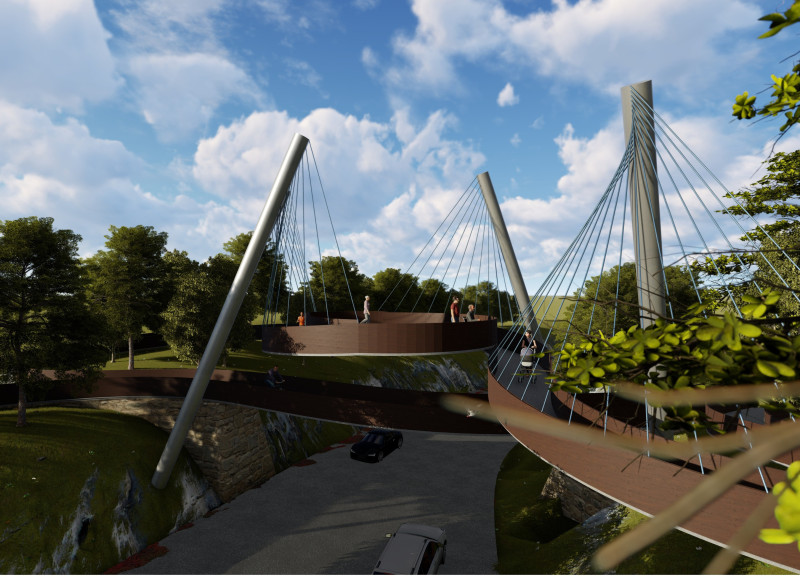5 key facts about this project
The Gauja National Park footbridge is a notable addition to one of Latvia’s oldest and largest natural areas. Celebrating the park’s 45th anniversary, the footbridge is designed to improve accessibility for visitors while serving as a connecting point between the park, the nearby sculpture park, and the town hall. The design combines practical function with an element of symbolism, enhancing the identity of the park and enriching the experience for those who visit.
Design Intent
The footbridge provides a safe and easy way for pedestrians to cross the street. By connecting different parts of the park, it simplifies the flow of movement for visitors. This connection allows people to travel between nature and community spaces easily, creating a more cohesive experience as they explore the area.
Architectural Significance
Positioned to clearly mark the boundary of the park, the footbridge aims to serve as a recognizable feature. It reflects the cultural heritage of the region and contributes to the overall character of the landscape. The design is thoughtful, integrating well with its surroundings and ensuring that it enhances the natural beauty of the park rather than contrasting with it.
User Experience and Interaction
The design revolves around improving the experience for visitors. The footbridge includes features that cater to a diverse range of users. Considerations such as proper width and gentle slope create pathways that are comfortable for everyone. This thoughtful design approach encourages visitors to take time exploring the park while fostering a sense of connection to the environment.
The footbridge emphasizes the important relationship between the park and its visitors. It serves as both a practical structure and a design element that invites people to engage more fully with the natural surroundings.


























